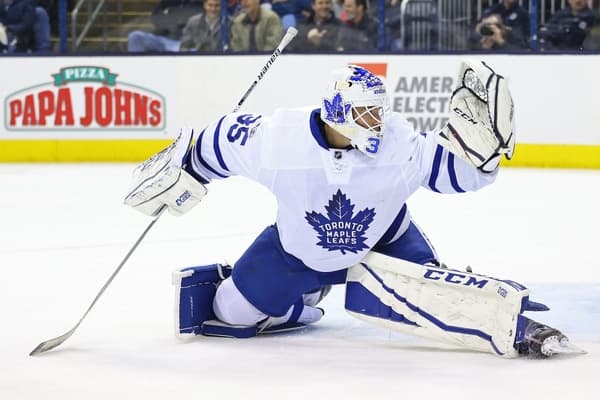Will Curtis McElhinney come crashing back down to earth?

By Sam Blazer
7 years ago
Win or lose this past weekend, there is one undeniable truth that has followed Curtis McElhinney wherever he has played.
He just hasn’t been that great of a player.
It’s a tough thing to admit, especially given the type of year he is having. This is McElhinney’s best season by a large margin. It isn’t particularly close either.
So why does he keep getting opportunities in net? Why did Toronto pick him up off waivers?
I’m uniquely qualified to write about McElhinney since I’ve watched him for the past three years playing for the Columbus Blue Jackets. Writing about the Blue Jackets, each year we identified the weakness on the team. Each year it was back up goalie. Looking at what McElhinney has done in his career, it makes sense why he deserved to be replaced.
This isn’t to say that McElhinney isn’t a great person. From all accounts in Columbus, including accounts from multiple writers and people inside the organization, they have talked about how generous he is with his time. You won’t hear a bad word about the guy, it doesn’t matter who you talk to, that is an accomplishment in and of itself.
We aren’t here to talk about McElhinney’s virtues as a person off the ice, we’re here to talk about his on-ice performance. Just looking at save percentage from 2007-2016, which doesn’t include this year, we get a taste of what he is as a player. Of all goalies that have played over 1000 minutes during that time, McElhinney is 120 out of 126. That puts him in between Rick DiPietro and Andrew Raycroft. Some truly sterling company.
Taking an even deeper dive into his numbers, you see that his low danger save percentage is good to great, you don’t have to worry about him from that regard. If you’re able to keep him on the perimeter, you should be fine. His high danger save percentage is where it all gets tricky.
At the very low end of the spectrum of high danger save percentage are players who hover around .730 in those scenarios. An average to good goalie puts up something around .810-.830 depending on the shots they faced. McElhinney from 2007- to the end of the 2016 season, had a high danger save percentage of .759. That puts him behind netminders like Dustin Tokarski and Justin Peters, once again fantastic company.
Looking at his high danger save percentage this year it is at .857, easily the best of his career. Also the best span of his entire career. It should also be noted that he has only played in fourteen total games this year, a very low mark. The Leafs have already been riding Frederik Andersen into the ground. They can’t afford to do it during the last part of the season. Someone has to take some starts.
His game against the Ducks could be an outlier for him. This could be the new McElhinney. In Columbus, he was often overactive in his crease and found himself out of position. In Toronto, he seems to have settled down and played more within himself. Even during his “peak”, he was never terribly athletic. Keeping everything in front of him is a much better decision than coming way out and cutting down the angles.
Barring the fact that he might become the next Tim Thomas, McElhinney has shown that he isn’t an NHL goaltender and hasn’t been one for years. It was a perplexing move when they picked him up off waivers initially. He had a hot-ish hand and the front office could take advantage of it. They may now be stuck with him for the playoffs. Is he who you want to turn the keys over to if injuries strike the team?
It’s a scary notion and his unsustainable play leads me to believe that he’ll come crashing down to earth. For Leafs’ fans, just hope it happens after this year.
Recent articles from Sam Blazer





